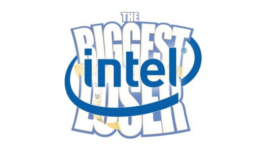I’ve really started to focus on Intel’s Board of Directors because the makeup of that board makes no sense to me. So, to prove a point I thought I would contrast both AMD and IBM’s boards with Intel’s to showcase the distinct difference in makeup and to argue that whoever organized Intel’s board was incompetent, negligent, or just plain stupid. What is particularly interesting is IBM, one of the oldest technology companies in the world and one that most thought would fail back in the 1980s and AMD, which has historically operated under Intel’s shadow are both outshining Intel at the moment. Intel should be doing far better as it is far less complex than IBM, and it is far more powerful than AMD yet that is clearly not the case.
Let’s get to it then and contrast the boards. (I’m leaving out the CEOs of all the companies as they are mandatory members of any board). Both AMD and IBM CEOs are IBM trained and IBM has one of the most robust grooming programs for CEOs in any industry (I was, for a time, in that program myself).
IBM
IBM’s board is a showcase of synergy. Largely made up of CEOs that run companies representing IBM’s largest customer set the board reflects IBM’s diversity and focus on total solutions. It is interesting to note that IBM’s board is not only diverse, but the minority members are representing some of the most seasoned and knowledgeable members on it, there are no token members or seat fillers. The shear reach of this group is humbling.
We begin with Kenneth I. Chenault who was one of the most influential financial CEOs in the US while running American Express (Banking is one of IBM’s most powerful customer segments), he was on the President’s Council on Jobs and Competitiveness suggesting he is well connected politically. He currently runs a VC and sits on Procter & Gamble’s and Facebook boards connecting to both past and current powerhouses. He also adds to the diversity in the board bit clearly is also a substantive contributor not just a token player.
Michael L. Eskew is the past president of UPS and sits on Eli Lilly and Company and 3M Boards providing him with breadth in the enterprise segment at a board level. This means he understands logistics and distribution allowing to advise on the changes in that industry and he’d be one of the board experts on Amazon at least with how it relates to shipping (Amazon is one of that market’s big disruptors) and would be invaluable with regard to industry knowledge in Pharmaceuticals as well, another IBM target industry.
David N. Farr is the CEO of Emerson Electric Co. a firm that doesn’t compete with IBM but is also a large diversified manufacturing and technology company. He sits on the China Business council and would be invaluable with regard to helping understand what is becoming the most powerful market in the world and he is chairman of the National Association of Manufactures and would be an excellent source of intelligence on that important segment for IBM.
Alex Gorsky is the CEO of Johnson & Johnson providing the board with strong intelligence on the medical and pharma markets. He sits on a number of foundations with the Wharton Board of Overseers board position standing out as a likely showcase for strong skills in corporate governance. Finally, he is a strong supporter of veterans sitting on the board of the Travis Manion Foundation and on the board for the Congressional Medal of Honor foundation. Veteran support, specifically helping to find veteran’s jobs, was an historic focus for IBM. One thing I almost missed he sits on the National Academy foundation which is focused on bringing business and education together to help assure the people companies like need are coming out of schools and would be very helpful in understanding not only the education segment but the best way to multilaterally help both education and business solve critical labor problems.
Shirley Ann Jackson is arguably one of the most influential executives in science and technology and serves as President of the Rensselaer Polytechnic Institute. With experience from working in Bell Laboratories, one of the few labs that rivals IBM’s own, she also has substantial regulatory and public policy experience. She has one of the strongest government advisory backgrounds as (well having served on a variety of Presidential and Secretary of State boards and advisory councils. A theoretical physicist (she has been a professor of theoretical physics and Rutgers) she is also on the board of Marathon Oil Corporation (Petro Chemical is another industry that IBM targets). She holds a Ph.D. and, rather than looking like the token board female she is arguably one of the most knowledgeable (I’d suggest the word brilliant) members of IBM’s board.
Andrew N. Liveris is both the Executive Chairman of DowDuPont and the Executive Chairman and CEO of Dow Chemical. One of the most powerful executives in the chemical industry he also sits on the Australian government’s Industry Growth Centres Advisory Committee and Thailand’s Board of Investment and able to provide broad insight into activities in those countries and a strong global perspective on business dynamics.
Hutham S. Olayan is the Vice Chairman of the Olayan Group a powerful multinational investor focused on industrial and commercial businesses in the Middle East. She also sits on the bard of Morgan Stanley one of the most powerful brokerage firms in the US and would be able to provide excellent insight into the financial trading industry a huge market for IBM. She serves on the boards of the MasterCard Foundation, the Memorial Sloan-Kettering Cancer Center and the Peterson Institute for International Economics. Ms. Olayan is also a member of the Council on Foreign Relations and international advisory bodies affiliated with the Belfer Center for Science and International Affairs of Harvard University and the Carnegie Middle East Center. This all gives her impressive breadth and knowledge on areas critical to IBM both in the US and abroad.
James W. Owens retired CEO Caterpillar Inc, arguable the most powerful manufacturer of construction, mining and farming equipment in the world. He is an economist and a director of Alcoa Inc. and Morgan Stanley. He would be invaluable in being able to talk about the dynamics in these related industries and given Caterpillar’s global nature, would have insights into the problems of selling expensive capital equipment globally.
Joseph R. Swedish is Executive Chairman and Past President and Chief Executive Officer, Anthem, Inc., a leading health benefits provider. Large scale health benefits is not only a huge potential market for IBM’s solutions it is one of the potentially largest beneficiaries for IBM’s AI Watson. He also sits on the board of CDW one of the largest US distributors of technology products. He would be able to provide unique insight on technology distribution as well and the increasing needs for health insurance providers in their quest to increase benefits while reducing costs, which are ideal problems for hyperconverged and deep learning systems.
Sidney Taurel is the Chairman Emeritus, Eli Lilly and Company, a pharmaceutical company, and Chairman, Pearson plc, a provider of digital education products and services. He is also a member of the Board of Overseers of the Columbia Business School, and a graduate member of The Business Council. Additionally, during the past five years, he was a director of McGraw Hill Financial, Inc. This suggests he would be another strong advisor on corporate governance, the pharma industry, and the evolving education market with emphasis on “evolving”.
Peter R. Voser is the Retired Chief Executive Officer, Royal Dutch Shell plc, a global group of energy and petrochemical companies and Chairman, ABB Ltd., a global group of power and automation companies. This gives IBM access to deep insight on the Petrochemical business as well as the emerging changes in the power and automation industries another one of the target areas for Watson specifically and Smart Cities generally (another major IBM initiative).
Frederick H. Waddell is Chairman and Retired Chief Executive Officer, Northern Trust Corporation, a financial services company. He would be able to provide insight into banking and finance, both huge IBM target industries and critical skills for any board of a company at this scale. Mr. Waddell is also a member of the Board of Trustees of Northwestern University and a director of AbbVie Inc. another powerful pharma company.
In summary, virtually all of IBM’s board have deep CEO skills and experience in markets IBM serves. At IBM’s scale the power of this board is almost unprecedented and speak to why IBM was able to successfully execute a turn around. And, of course, IBM’s CEO was trained one of the most robust CEO training programs in the industry (in 100 years only one IBM CEO left prematurely).
AMD
AMD is far less diverse, and so is their board, and they are not a solution provider, here an ideal board would largely be made up with CEOs that have engineering or industry backgrounds to help the company better position against its most powerful competitor Intel.
John E. Caldwell is ex-CEO of SMTC Corporation (an electronics manufacturing services company) and over the course of his career, Mr. Caldwell has served on the audit committees of ten public companies. He brings to the Board extensive and diversified general management, financial management and risk assessment experience as a result of his experience at SMTC, his other executive management experience and his service as a director on the boards of directors of other public companies. He would be particularly strong on governance and risk, very important for any corporate board.
Nora M. Denzel is one of the most intelligent and knowledgeable executives I’ve ever known and worked with at IBM. She ran the software unit at HP for a time and is particularly strong in the storage market having worked for Legato after working in the storage division of IBM (where I worked with her). She has surprisingly broad industry knowledge having held a variety of positions across companies that include Intuit, and Outerwall (where she was interim CEO). I’ve often thought companies need more people like Nora on boards because they know how companies need to work from the inside across a breadth of staff and line positions. She would also contribute to board diversity but by no means would be a token player or place holder.
Mark Durcan ex-CEO Micron Technology. Micron is very similar to AMD and Mark not only is an Engineer (albeit a chemical engineer) he has held a number of integral engineering positions over his career at Micron including head of R&D and would be able to understand intimately AMD’s issues and problems both operationally and strategically. He would likely be an invaluable contributor to AMD’s board and would have unique experience, both as a CEO and engineer, that would help the board navigate the various technical and operational issues it would annually face.
John W. Marren is an EE was a Senior Partner and the Head of Technology Investments of TPG, and he spent seven years in the semiconductor industry working for VLSI Technology and Vitesse Semiconductor. Mr. Marren currently serves on a number of private company boards including Avaya Inc., Infinidat, Inc. and Isola Group. He has substantial investment and operational experience in AMD’s market segment and industry. It is critical an engineering company have qualified engineers on the board and John is clearly one of them.
Joseph A. Householder is President and Chief Operating Officer for Sempra Energy (a worldwide provider of energy infrastructure and gas and electric utilities). He is a member of the Tax Executives Institute, the American Institute of Certified Public Accountants, the State Bar of California and the American Bar Association. He holds a Bachelor of Science degree in business administration from the University of Southern California and a juris doctor degree from Loyola Law School. This is actually pretty interesting because AMD has often found itself in litigation against Intel (a long history of unfair and anti-competitive practices) having someone strong on compliance and a lawyer could be very handy both tactically and strategically on the board.
Michael J. Inglis is another EE and has held several senior executive positions between 2002 and 2013 at ARM Holdings plc (a semiconductor intellectual property supplier), including as Executive Vice President, Sales and Marketing, as Executive Vice President, General Manager, Processor Division, and as Chief Commercial Officer. ARM holdings are arguably the most powerful entity in the emerging mobile market in terms of technology control and leadership in processors. Michael would understand the market dynamics surrounding AMD and would be particularly good at avoiding past mistakes AMD’s board made with their own mobile efforts.
Abhi Talwalkar another EE was President and Chief Executive Officer of LSI. He held a number of senior management positions at Intel Corporation, including Corporate Vice President and Co-General Manager of the Digital Enterprise Group, which was comprised of Intel’s corporate client, server, storage, and communications businesses, and Vice President and General Manager for the Intel Enterprise Platform Group, where he focused on developing, marketing, and driving Intel business strategies for server computing. An EE and ex-Intel power player, an obvious power player on AMD’s board.
Ahmed Yahia is an ME and a CEO of the Technology & Industry global platform of Mubadala, where he oversees Mubadala’s technology, metals, mining and utilities portfolio. He is also a member of Mubadala’s Investment Committee, which is mandated to develop Mubadala’s investment policies, establish investment guidelines and review all proposed projects and investments to ensure they are in line with Mubadala’s business objectives. I suspect Ahmed is on the board representing one of AMD’s most powerful investors.
In summary AMD, a similar company to Intel, has 4 EEs, an ME, and a CE on the board (Lisa Su, AMD’s CEO, has a PhD in Electrical Engineering herself). The vast majority of board members have deep knowledge of AMD’s industry and those that don’t either provide needed breadth, governance guidance or represent a major investor. AMD’s CEO is also IBM trained.
Intel
I’m just going to mostly summarize Intel’s board because it, with one huge exception (which I’ll cover in detail), makes virtually no sense to me what so ever.
Andy D. Bryant: Chairman ex-Intel CFO: I see no reason why a firm would need two CFOs but at least he’d know the company.
Aneel Bhusri CEO Workday Inc a firm that does enterprise cloud applications for human resources and finance. A software visionary.
Reed E. Hundt has been a Principal of REH Advisors LLC, a strategic advice firm in Washington, D.C., since 2009 and CEO of the Coalition for Green Capital, a non-profit headquartered in Washington, D.C., that promotes the development of state, federal, and international green banks since 2010.
Omar Ishrak (an EE PhD) is the chairman and chief executive officer of Medtronic, a global leader in medical technology, and has served in that role since 2011. Prior to joining Medtronic, Ishrak spent 16 years in various roles with General Electric Co., most recently as president and chief executive officer of GE Healthcare Systems, a division of GE Healthcare.
Dr. Lavizzo-Mourey is the Robert Wood Johnson Foundation PIK Professor of Population Health and Health Equity at the University of Pennsylvania. From 2003 to 2017, she was the president and chief executive officer of the Robert Wood Johnson Foundation, the largest U.S. philanthropy organization dedicated to health. She is a medical doctor.
Tsu-Jae King Liu has been a director of Intel since 2016. Dr. Liu holds a distinguished professorship endowed by TSMC in the Department of Electrical Engineering and Computer Sciences (EECS), in the College of Engineering at the University of California, Berkeley. Dr. Liu also serves as dean at the College of Engineering, the first woman to hold that position at UC Berkeley. A clear superstar and the only Intel board member that looks like they truly belong on the board.
Gregory D. Smith is the chief financial officer and executive vice president of enterprise performance and strategy at Boeing. Another CFO, we are now up to three CFOs and only two EEs.
Andrew Wilson is the chief executive officer of Electronic Arts Inc. (“EA”), a global leader in digital interactive entertainment. He serves as chairman of the board for the World Surf League. So, video games and surfing.
Frank D. Yeary has been a director of Intel since 2009. He is executive chairman of CamberView Partners, a leading source of independent, investor-led advice for public companies. Effectively a third CFO.
So, two EEs (granted one of them is truly impressive), one that is a medical equipment expert, 3 CFO types, one software “visionary” and surfing expert, and an MD. And Intel’s last 3 CEOs didn’t make it to term, weren’t electrical engineers (Craig Barrett was a Materials Engineer), and all had an inability to execute. We won’t discuss the various affairs (which I think speaks to a lack of ethics).
Wrapping Up:
IBM and AMD had great quarters, even after massive cuts and a clear effort to pad margins Intel missed and much of the firm’s future was shut down. Their most recent claim to fame are drone swarms which look great but have no real revenue potential. Any fix for Intel should begin by rebuilding the board and making it more strategic like IBM and AMD have done. They don’t even have anyone from either mobile or automotive industries on the board where they seem to want to play. Though doing a deal to sell inferior modems to Apple at or below cost won’t help Intel’s brand, margins, or profit.








